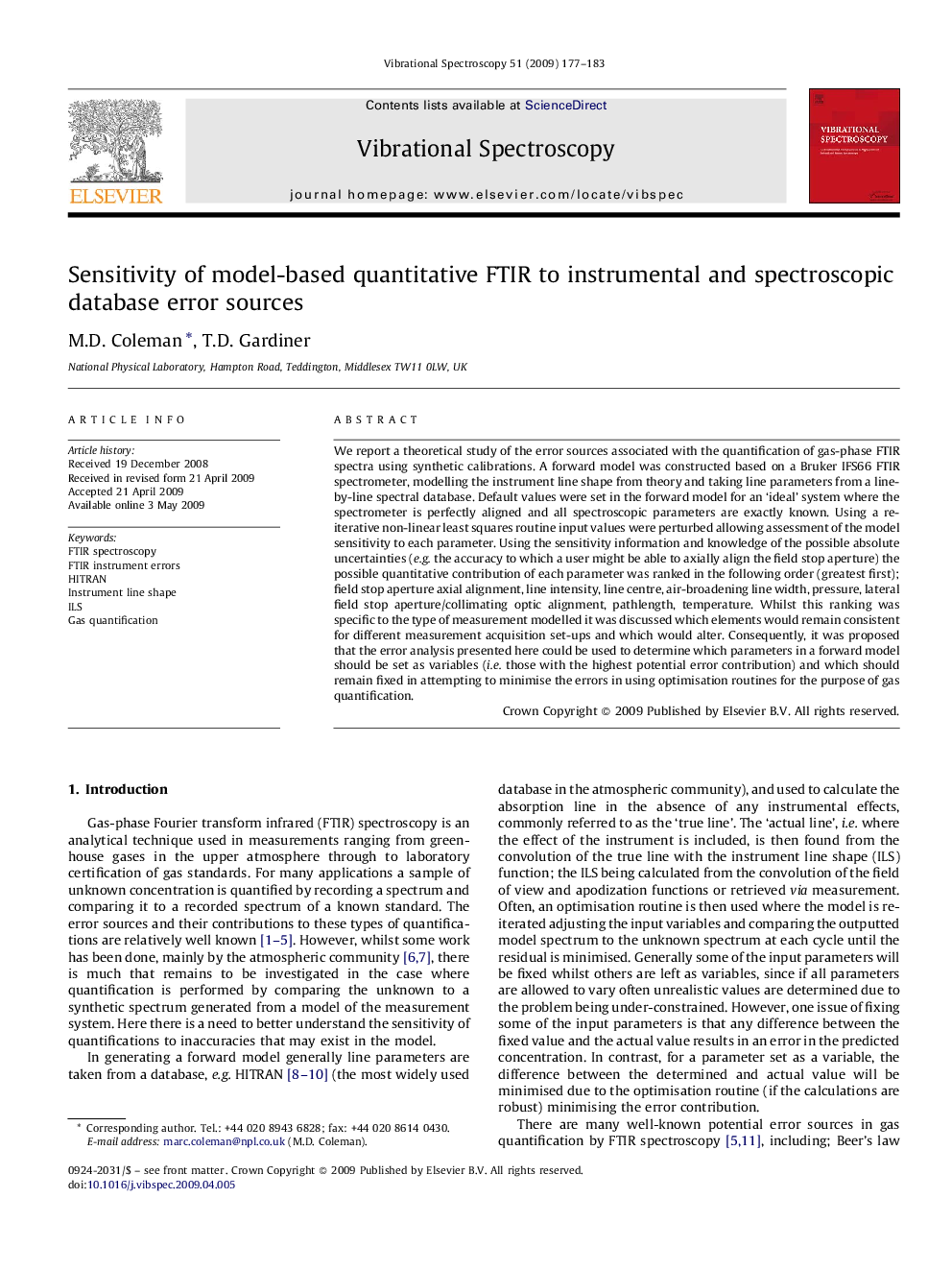| Article ID | Journal | Published Year | Pages | File Type |
|---|---|---|---|---|
| 1250707 | Vibrational Spectroscopy | 2009 | 7 Pages |
We report a theoretical study of the error sources associated with the quantification of gas-phase FTIR spectra using synthetic calibrations. A forward model was constructed based on a Bruker IFS66 FTIR spectrometer, modelling the instrument line shape from theory and taking line parameters from a line-by-line spectral database. Default values were set in the forward model for an ‘ideal’ system where the spectrometer is perfectly aligned and all spectroscopic parameters are exactly known. Using a re-iterative non-linear least squares routine input values were perturbed allowing assessment of the model sensitivity to each parameter. Using the sensitivity information and knowledge of the possible absolute uncertainties (e.g. the accuracy to which a user might be able to axially align the field stop aperture) the possible quantitative contribution of each parameter was ranked in the following order (greatest first); field stop aperture axial alignment, line intensity, line centre, air-broadening line width, pressure, lateral field stop aperture/collimating optic alignment, pathlength, temperature. Whilst this ranking was specific to the type of measurement modelled it was discussed which elements would remain consistent for different measurement acquisition set-ups and which would alter. Consequently, it was proposed that the error analysis presented here could be used to determine which parameters in a forward model should be set as variables (i.e. those with the highest potential error contribution) and which should remain fixed in attempting to minimise the errors in using optimisation routines for the purpose of gas quantification.
